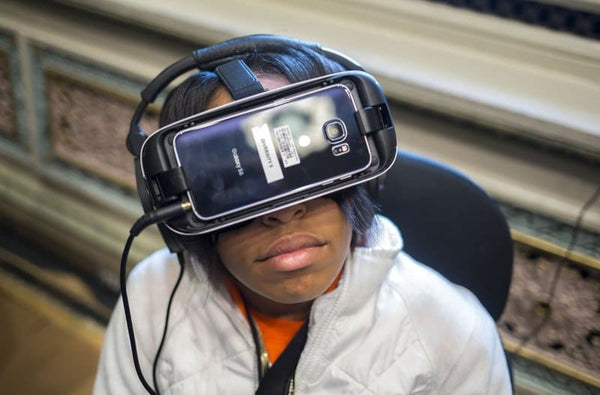
Girls and Gigabytes
On February 12, the White House hosted “Girls and Gigabytes,” an exciting workshop wherein over 150 students from middle and high schools gathered to take part in events featuring STEM topics (Dessources, 2016). With a particular emphasis on reaching African American girls, the workshop targeted this demographic mainly due to the underrepresentation of African American women in STEM fields.
This phenomenon was of particular interest to Laura Perna and other researchers who studied the effects of HBCUs, Historically Black Colleges and Universities, (a Spelman College initiative) on the preparation of African American women for STEM careers (Perna et al., 2008). In their findings, they reported that the program was effective, noting that that there is a strong relationship between “self-efficacy and educational attainment in STEM  fields” (Perna et al., 2008). This shows that there are obvious implications for the presence of psychological barriers and fear of future failure as being possible hindrances in STEM degree attainment. One way to combat this, as seen by Spelman’s program and “Girls and Gigabytes”, is to foster greater confidence in STEM ability while reinforcing the level of excitement creative engagement in science and math can bring.
fields” (Perna et al., 2008). This shows that there are obvious implications for the presence of psychological barriers and fear of future failure as being possible hindrances in STEM degree attainment. One way to combat this, as seen by Spelman’s program and “Girls and Gigabytes”, is to foster greater confidence in STEM ability while reinforcing the level of excitement creative engagement in science and math can bring.
In a similar fashion, Perna and colleagues also discovered that, while studying the direct outcomes of Spelman’s program, that cognitive social theory was profoundly operative in the dominant discourse surrounding the research. Essentially, this theory predicts that “people are more likely to perform tasks they believe they are capable of accomplishing and are less likely to engage in tasks in which they feel less competent” (Perna et al., 2008). Much like the idea of promoting self-efficacy, the discussion of the study revealed that it is vitally important for a program that seeks to further the academic development of students in any field to recognize that a discouraging approach (however honest) taken in ability assessment has serious repercussions; the impact could potentially stunt the student’s desire to take on more challenging coursework, resulting in an overall disinterest in perhaps pursuing what the student is ultimately capable of (Perna et al., 2008).
In order to relax the atmosphere while promoting fun, the “Girls and Gigabytes” conference introduced students to virtual technology, how to code and create own applications, and how to operate a robot while employing novel engineering techniques. By encouraging students to interact with what they might not typically encounter in the classroom, this program actively stimulated interest while bolstering overall self-esteem in tackling unique challenges (Dessources, 2016). More on the event can be seen here.
A longtime partner and advocate of bringing students real life experiences with STEM concepts, PCS is proud to offer after-school camps, labs, and products much like what the girls at the White House explored. While getting girls excited about STEM is always important, it is still equally valuable to empower all students with the skills needed to meet new demands in science and math.
References:
Dessources, K. (2016, February 12). Girls and gigabytes: expanding opportunity for African American women in stem. Retrieved February 17, 2016, from https://www.whitehouse.gov/blog/2016/02/12/girls-and-gigabytes-expanding-opportunity-african-american-girls-stem
Perna, L., Lundy-Wagner, V., Drezner, N., Gasman, M., Yoon, S., Enakshi, B., Gary, S. (2008, September 16). The contribution of hbcus to the preparation of African American women for stem careers: a case study. Retrieved February 17, 2016, from http://www.cssiacyberwars.info/pdf/20000204-TheContributionofHBCUstothePreparationofAfricanAmericanWomenforSTEMCareers.PDF









